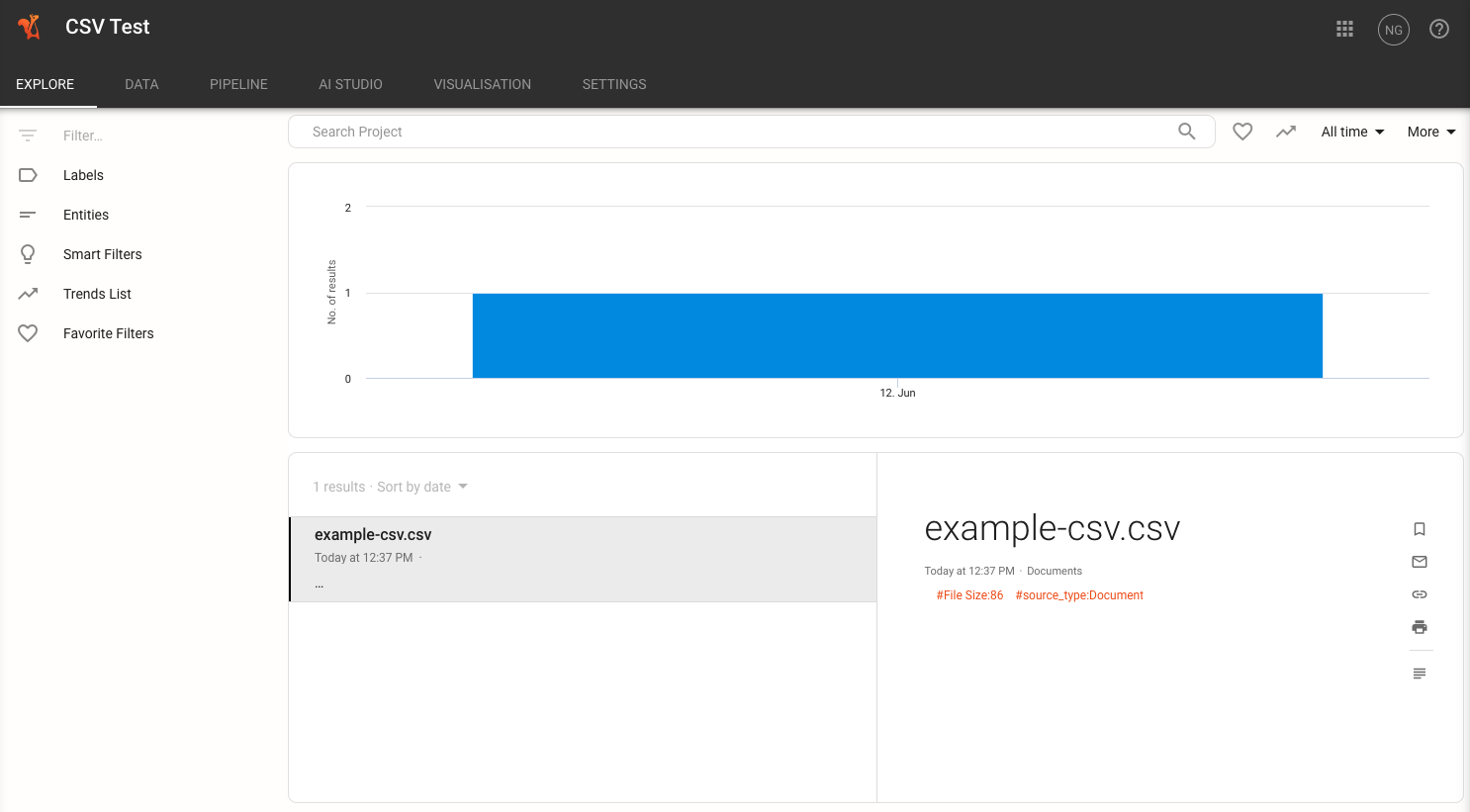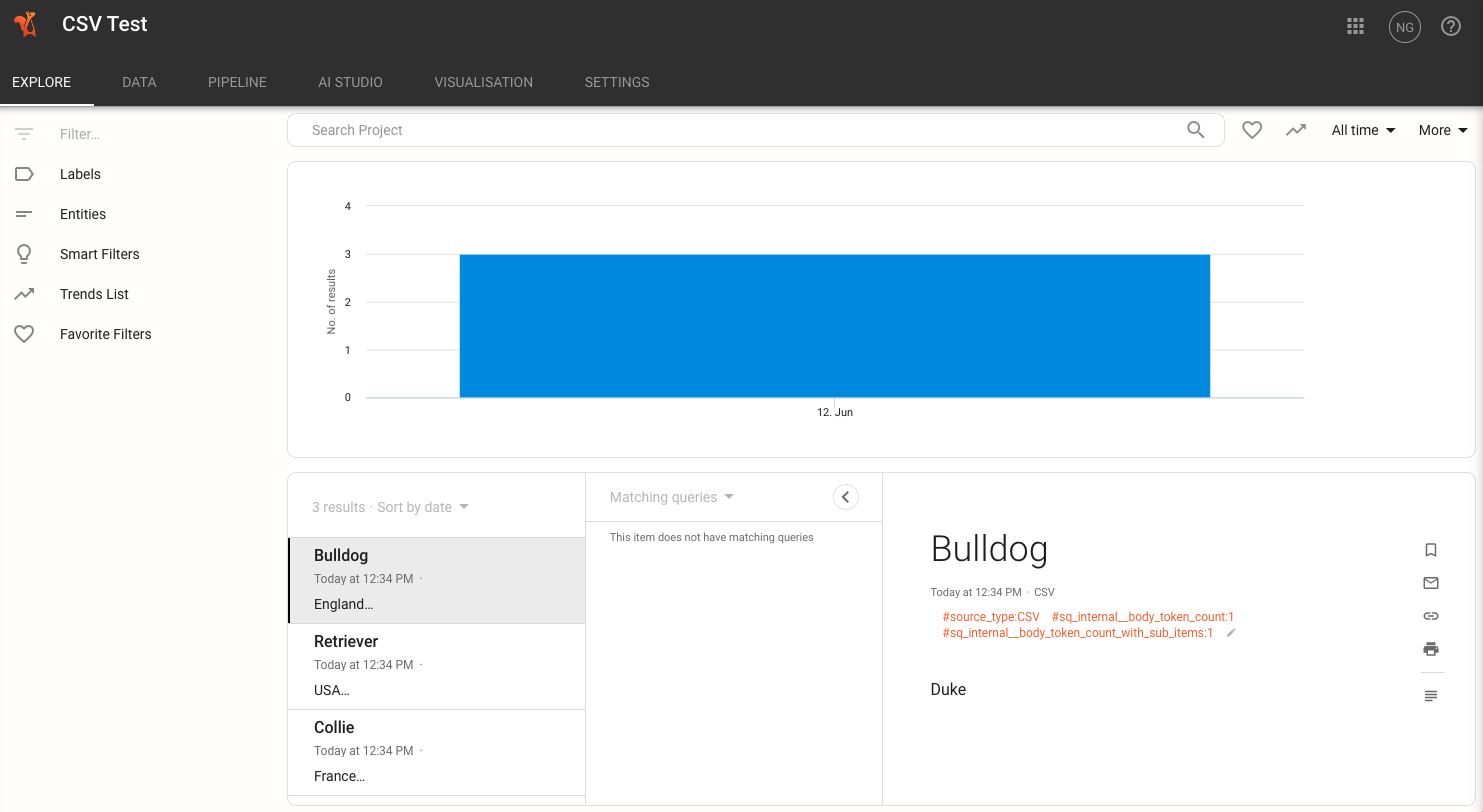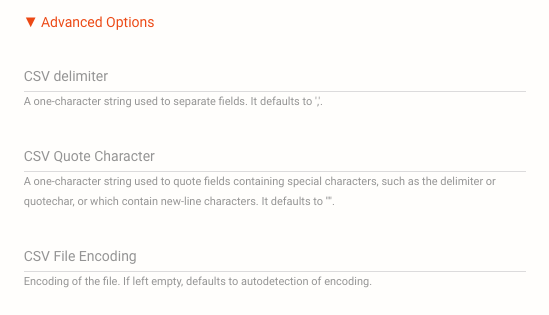CSV Connector#
Profile: Project Creator
This page provides an overview of the CSV connector.
Project creators use this connector to upload CSV files to their Squirro projects.
How to Upload a CSV File#
Open your Squirro project.
Navigate to the Setup space.
Click the Data tab. By default, you will be on the Data Sources page, as shown in the example screenshot below:

Click the orange plus sign (+) in the top-right corner of the page to add new data.
Click the Data Import tab.
Select either the CSV or Documents connector depending on how you want to import your CSV file. (See the follow section to understand the differences.)
CSV Versus Documents Connector#
The CSV connector is one of two means of importing CSV files into Squirro.
Reference: The other is to use the Documents Connector.
The primary difference between the two connectors is that with the CSV connector, each row of the CSV file is imported as its own Squirro object.
With the Documents connector, the entire CSV file is converted to PDF and imported as a single Squirro object.
Example Scenario#
In the following example scenario, a CSV file containing names, positions, and addresses is uploaded to Squirro using the CSV connector and the Documents connector.
Documents Connector#
Using the Documents connector, the entire Excel file is converted to PDF and imported as a single Squirro object, as shown in the example screenshot below:

CSV Connector#
Using the CSV connector, each row of the Excel file is imported as its own Squirro object, as shown in the example screenshot below:

Header Rows#
It is strongly recommended to include a header row in any CSV files you upload.
Squirro will always use the first row of the CSV file as the header row.
This row should contain column titles or descriptions and is used to properly map the fields.
Warning
If no header row is included, the first row of data within the CSV file is used as the header row, which will likely result in incorrect field mapping and the first row of data not indexing properly as a Squirro item.
CSV-Specific Data Loading Options#
Under the Advanced Options dropdown, you can find the CSV Delimiter, CSV Quote Character, and CSV File Encoding options, as shown in the example screenshot below:

CSV Delimiter#
By default, CSV files are delimited by commas (,). However, if your CSV file is delimited by another character, you can specify it here.
CSV Quote Character#
By default, CSV files use double quotes (") as the quote character. However, if your CSV file uses another character, you can specify it here.
CSV File Encoding#
By default, CSV files are encoded using UTF-8. However, if your CSV file uses another encoding, you can specify it here.
